dr brandon nelson
Displaying items by tag: dr brandon nelson
Dr Brandon Nelson, A Board-Certified Physician and Surgeon, Discusses Heel Pain and Exercise
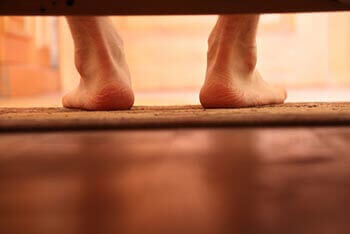
Exercise for me is an integral part of my daily life. I enjoy going for a run before work or on the weekends with my daughter. It provides much needed stress relief and helps to recharge my mind and body. I have suffered from heel pain and it was both depressing and challenging to continue on with my exercise and even daily activities.
Heel pain can often be exacerbated by exercise so I am going to provide a few tips that can be helpful:
1. Ice after exercise
2. Warm up before exercise and cool down
3. Stretching after you exercise
4. Switch to low impact activities until pain is under control
If you have suffered from heel pain for more than a month, please give us a call at 425-391-8666 or make an appointment online today.
Dr Brandon Nelson, A Board Certified Physician & Surgeon, Discusses Surgery For Heel Pain/Plantar Fasciitis
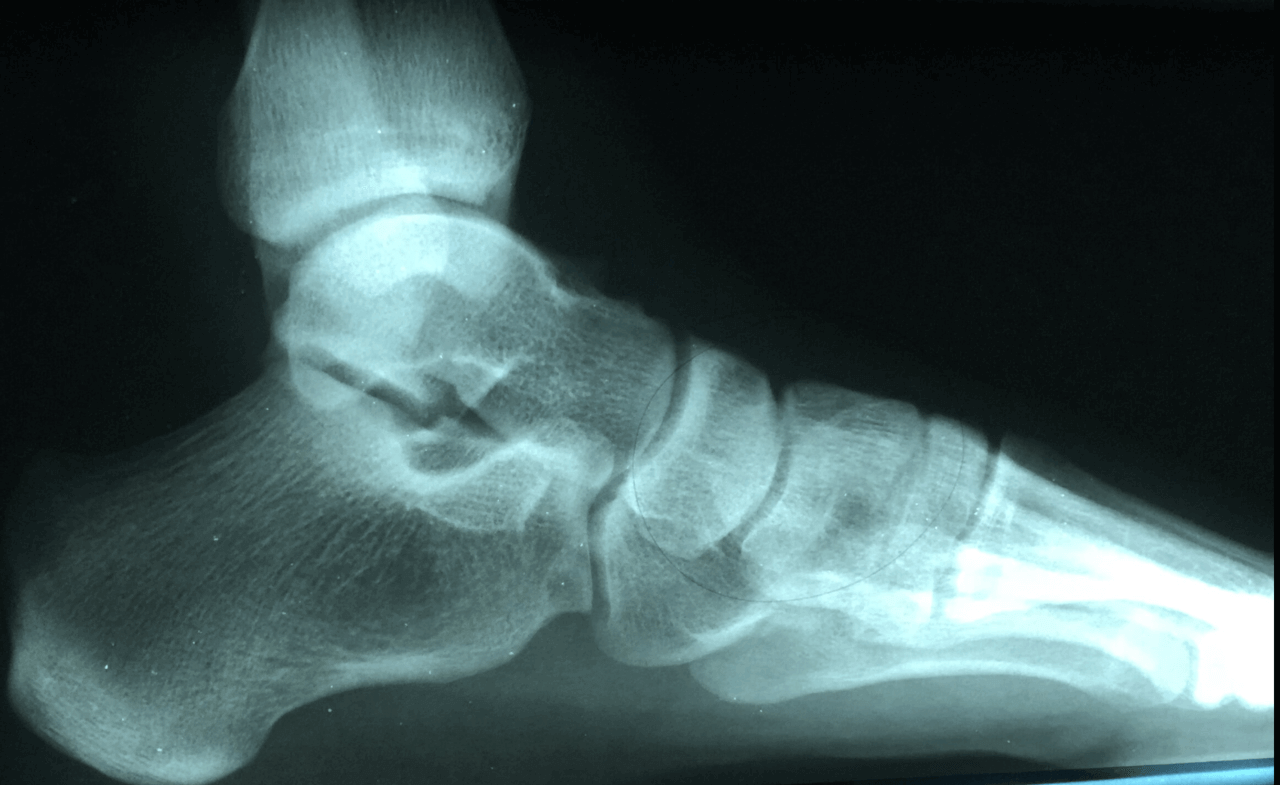
With heel pain affecting so many Americans, surgery is a common question I receive in the office. Most people that are curious about surgery have suffered from heel pain for months or even years and have tried all the conservative measures. They have tried things like orthotics, injections, splints, physical therapy and are still having pain. The discussion of surgery is an appropriate next step but at my office we have a few options that most physicians do not offer.
Surgery for heel pain or plantar fasciitis is highly successful and there are a few different procedures, but all have similar results. Many of the surgeries involve cutting or releasing the fascia and stimulating the biology of the body. The stimulating of the biology is important as it will increase blood supply and help with healing. Another procedure that has been in the current research is a gastric recession. This is where you lengthen a fascial type of structure in a patients leg to help reduce the pull of the Achilles tendon. Lately this has received a lot of attention and is showing very promising results.
I think a discussion on biology is important for this blog as well. Part of the long-term problem is chronically inflamed tissues. One’s fascia becomes chronically irritated and if you change the biology, you can usually fix the problem. I have developed a protocol and technique that is non-surgical that helps to stimulate your bodies own natural healing techniques and fixes most of the plantar fasciitis permanently. If you are suffering from heel pain I can help make and appointment today. Give us a call today at 425-391-8666 or make an appointment online.
Dr Brandon Nelson, A Board Certified Physician & Surgeon, Discusses When to Get Bunion Surgery
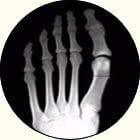
This is probably one of the most common questions I hear when patients come in for a consultation. I think this question is easy to answer, however does have a few details that need to be addressed. I think the most important details are family history, activity level and expectations.
Family history, most bunions have a family history component. There is usually a parent or grandparent that has had a bunion. I think of this as the future of one’s foot structure. Does a relative take off their shoe and all their toes are crossing over? Is there a history of other members having their bunions fixed? These are good questions to answer and can be helpful in deciding to fix your bunion.
Activity level is another important thing to consider. Are you having a hard time exercising due to the pain? Is it getting difficult to fit shoes or boots? I also like patients to think about what your long-term fitness goals are. Will your feet hold up for these? It is vital for our overall health and sense of well being to stay active.
Expectations should be clearly stated and discussed with your surgeon. Do you expect your bunion foot to be exactly like the foot without a bunion? What are your time frames regarding healing? Do you have any up coming obligations like a vacation or wedding? I think taking a critical look at how you hope the surgery goes and how you want to recover can be helpful
These are not inclusive of every detail to help with decision making but are a good place to start. The most important thing is to have your foot evaluated and discuss your goals with your surgeon. If you have a bunion and want to have it evaluated and a detailed plan put in place please give us a call at 425-391-8666 or make an appointment today.
Dr Brandon Nelson, A Board-Certified Surgeon and Physician, Discusses Hammertoes
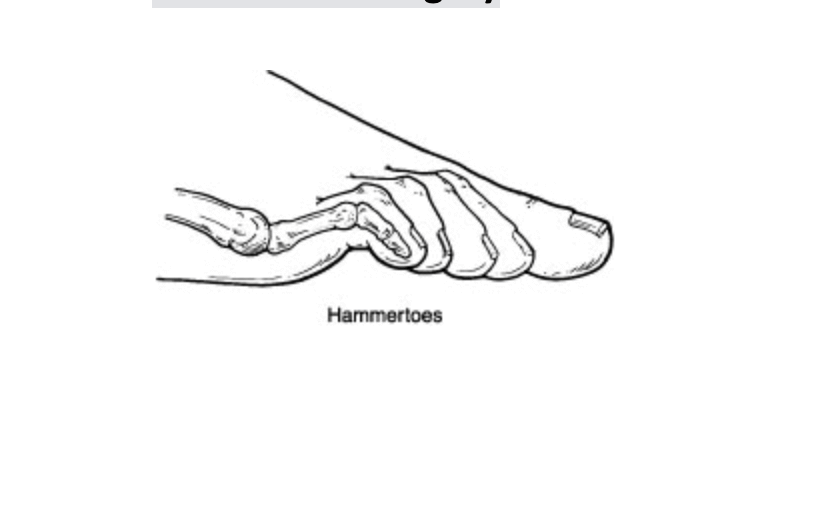
Hammertoes are when your digits on your feet begin to curl. Typically, this is seen with a flat foot or a bunion deformity. However, they can occur in isolation or because of trauma. The deformity itself is usually progressive and can become increasing painful and more severe.
Conservative measures, there are very few available for hammer toes. Some people may find a change in shoe gear can provide some relief. Others will try pads and splints to cushion the toes are create some space. I have never seen these provide long term solutions are change in the hammer toe itself.
Surgical repair continues to be the only long-term solution. Surgery for a hammer toe is relatively straight forward and can provide excellent correction. It is important to consider other underlying factors or pathologies that are contributing to the toes position. I recommend having these addressed at the same time.
If you have some painful digits, we can help.
Give us a call at 425-391-8666 or make an appointment online today today.
Dr Brandon Nelson, A Board Certified Physician and Surgeon, Discusses the Best Long Term Treatment for Plantar Fasciitis
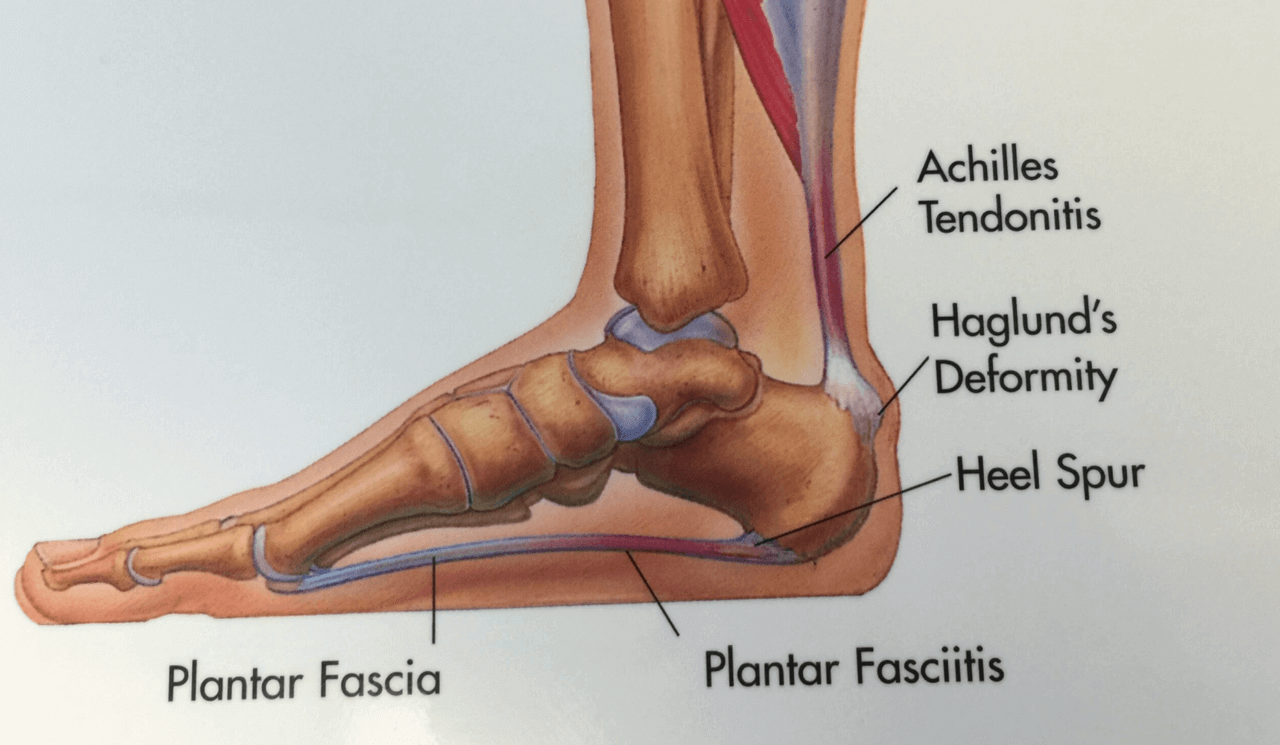
Plantar fasciitis continues to be the most common source of heel pain. The majority of our heel pain patients are still presenting with fasciitis. Patients usually feel pain in the morning or after sitting for a short period of time. The symptoms can range from burning and tingling in the heel to a bruised like sensation when walking. There does not need to be any history of trauma or even an increase in exercise. The major causes continue to be anatomical and foot structure related.
I can tell you I have been treating plantar fasciitis now for almost 15 years. I would say a conservative estimate is probably close to 10,000 patients that I have treated for heel pain. I have learned a lot with this time and quantity. I continue to read and learn and study each patient. This has provided me with a unique perspective. I would say I am probably one of the foremost experts on heel pain.
The best long-term treatment to date that I have discovered is utilizing one’s own biology to heel the plantar fasciitis. This condition is created when the fascia is overworked and needs to be strengthened structurally and functionally. The technique I utilize is unique to my practice and has taken years to perfect. Basically I harness a patient’s natural ability to heal and utilize that to repair the fascia. There is no down time, and the success rate is close to 97%. If you suffer from fasciitis make an appointment today and I will help.
Give us a call at 425-391-8666 or make an appointment online today.
Best Local Bunion Surgeon, Dr Brandon Nelson a Board Certified Foot and Ankle Surgeon

Bunion surgery is by far the most common surgical procedure that I perform. That is why I developed the Washington Bunion Center. We use state of the art equipment, the latest techniques all to provide the best possible patient experience and outcomes. We have advanced protocols for pain control after surgery and to decrease healing time. Additionally, I minimize surgery time for a better patient outcome, reducing things like post-operative nausea and grogginess regardless of the type of bunion surgery needed.
The average bunion surgery requires cutting of the bone or fusion of a joint. These are the two most common bunion surgeries to date. Regardless of the procedure needed I can make sure patients are walking immediately after surgery or within a few days by utilizing special techniques and weight bearing options. This had taken years to develop and the reason I am able to do this is related to years and years of experience.
This experience is what sets me apart from other bunion surgeons. I have fixed so many bunions over the last 15 years that is has provided me with invaluable skill and knowledge that results in excellent outcomes. I feel that by combining these two attributes’ patients have the best possible results. If you are thinking about fixing your bunion schedule an appointment today so I can help.
Give us a call today at 425-391-8666 or make an appointment online today.
Bunion Surgery Recovery, Dr Brandon Nelson

Quite a few patients ask about bunion surgery and bunion surgery recovery. I hear a lot of stories from patients about neighbors, friends or family members that have had bunion surgery. There seems to be some misconceptions about bunion surgery and some general misconceptions. I want to help clarify this for patients and anybody thinking about fixing their bunion.
Bunion surgery can really be broken down into two different procedure locations. Bunions can be corrected at the head of the metatarsal or the base of the metatarsal. The head procedures are generally utilized for smaller bunions and base procedures are better suited for larger bunions.
Head procedures are probably the most common bunion procedure. This is often called an Austin bunionectomy and has been around for greater than 50 years. It was one of the first bunion procedures and has great success and most patients can return to a normal shoe in about 4-6 weeks. Patients can walk the entire time after surgery in a boot for about 4 weeks.
Base procedures are a little more involved surgery and therefore the recovery is longer. Most base procedures can allow patients to walk in a boot in 2-4 weeks. However, the total recovery from this type of surgery can be 8 weeks or longer.
I hope this helps to answer a few bunion surgery questions! Give us a call at 425-391-8666 or make an appointment online today.
Dr Brandon Nelson, A Board Certified Physician, Discusses Morning Heel Pain
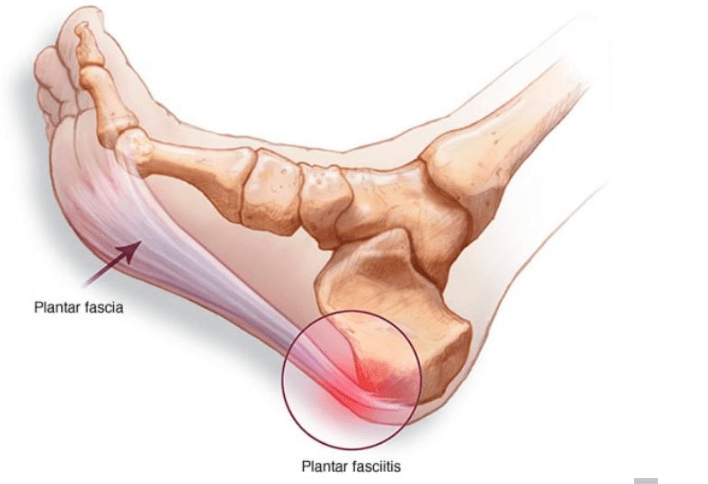
Moring heel pain is extremely painful and can cause quite a disruption to your daily routine. It is not only uncomfortable but also can become emotional upsetting to start one’s day with pain. It is estimated that about 60-70% of adults will experience this at some point in their life and it can last months without treatment.
The pain is one’s heel is usually related to inflammation of your plantar fascia. Your plantar fascia provides structural support to your foot and is activated when you walk. It runs the entire length of your foot and starts at your heel and continues to your toes.
Treatment of morning pain usually starts with stretching and icing. I recommend using a theraband or a belt to stretch before you get out of bed. Massage is another option and icing can provide help with the inflammation. It is important to consult a physician before beginning your treatment as not all heel pain is plantar fasciitis.
Dr Brandon Nelson, A Board Certified Surgeon, Discusses How To Get Rid Of That Morning Foot Pain

It is common for patients to come in the office and relate pain in the morning or right when they get out of bed. This can be a challenging way to start your day and can lead to chronic foot pain. Most patients describe the pain as a bruised feeling to the heel or a tightness with pins and needles. This can go on for months and become chronic. The most common cause of this type of pain is Plantar Fasciitis. Plantar Fasciitis is an inflammation of a supporting band of tissue on the bottom of the foot. The Plantar Fascia is essential for normal foot function and when it is inflamed daily tasks can be overwhelming.
Morning pain is one of the most common signs of Plantar Fasciitis. The reason behind this is while you sleep your Fascia and Achilles Tendon have a chance to relax. With this relaxation both structures begin to tighten up. This tightening up leads to stiffness when you first step on your foot. One can really help this by exercising their foot before getting out of bed. I recommend writing the alphabet with your foot and stretching with a theraband.
If your pain continues for more than a week an appointment is essential. Give us a call at 425-391-8666 or make an appointment online today.
Dr. Brandon Nelson Discusses Heel Pain

Heel pain can be extremely frustrating and challenging to treat. It is most often caused by plantar fasciitis, bursitis, or a stress fracture. It is important to find out the underlying cause before treatment and I highly recommend seeing a foot and ankle specialist before initiating and sort of treatment.
Bursitis, this is basically and inflammation of a sac that is used to cushion the foot. Typically, you will have similar symptoms to plantar fasciitis. Patients experience pain in the morning or with standing and after rest. It can be hard to differentiate from plantar fasciitis. However, at our clinic we have an ultrasound unit which we can use to visualize the bursa and help initiate treatment.
Stress fractures are usually seen after one begins to exercise. There can be accompanying swelling and stiffness. This pathology hurst constantly and can lead to a complete fracture. It is vital to get an x-ray and confirm the diagnonsis.
Heel pain or plantar fasciitis is the most common cause and can be variable in presentation. Classically, patients experience pain in the morning that gets better with a few steps. Most patients have increased activity levels and find pain returns whenever they rest and get us. There is a direct correlation with early intervention and a shorter duration of symptoms. I highly recommend getting in as early as possible to see your foot and ankle physician.
If you are suffering with heal pain I can help, come see me today. Give us a call at 425-391-8666 or make an appointment online today.



